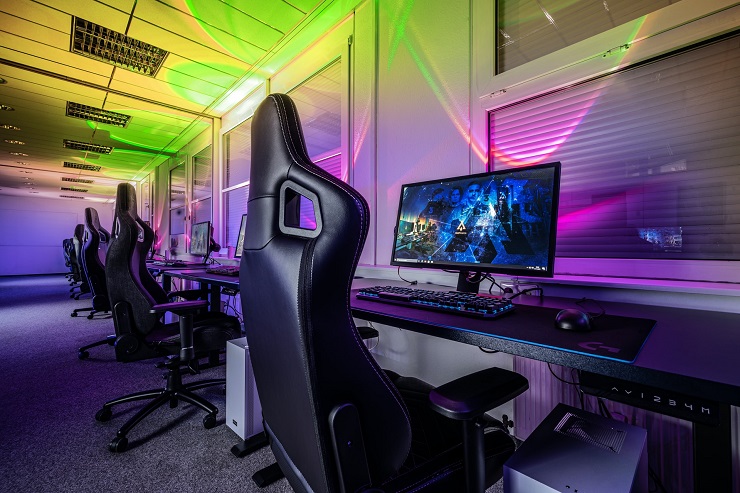Game design software does play a pivotal role in bringing the digital world to life, which allows game developers and designers to create immersive and engaging experiences. The world of game design is a captivating landscape brimming with possibilities.
However, it becomes difficult for a developer to choose one software from many. With a plethora of engines and tools, choosing the right one has become complex. It is important to choose the right one because it not only influences the development process but also the outcome.
There are key considerations and factors that one has to consider while choosing the software so you can make an informed decision.
Understanding Your Project Requirements
-
Game Genre
The first thing that one should always consider is genre. It is important to understand the genre of your game. Different software may cater to specific genres, whether it is first-person shooter, role-playing game, strategy game, or simulation. To ensure compatibility, you should identify the features and tools essential for your chosen genre.
-
Platform Compatibility
You should consider the platforms your game will be available on, such as consoles, PCs, mobile devices, or virtual reality. You must ensure that the free game design software you choose supports the platforms you intend to target, as each platform may have unique requirements and capabilities.
-
Scope and Scale
Evaluate the size & scope of the project. The software should have features that match the goals of your project, regardless of how big or little your production is. While some software offers powerful functionality for large-scale, high-end productions, others could be more appropriate for smaller projects with simpler designs.
Features and Tools
-
Graphics and Rendering Capabilities
Graphics and Rendering Capabilities are essential in game design software because of its graphics and rendering capabilities. The visual aspects of the game significantly impact player engagement and enjoyment. A virtual world with realistic lighting, fine details, and high-quality visuals is quite appealing.
A game development company that designs software with robust graphics capabilities that allow developers to create visually stunning scenes that captivate players.
-
3D Modeling and Animation Tools
For games that involve three-dimensional environments and characters, 3D modeling and animation tools are indispensable. These tools empower designers to bring characters, objects, and landscapes to life with lifelike movements and expressions.
Whether crafting lifelike characters for a role-playing game or designing intricate environments for exploration, the versatility of 3D modeling and animation tools in game design software is a cornerstone of creative expression.
The ability to seamlessly integrate these elements ensures that the virtual world feels vibrant and alive, captivating players with a sense of realism and immersion.
-
Scripting and Coding Support
Behind every interactive and dynamic game lies a foundation of scripting and coding. Game design software’s scripting and coding support is critical for implementing game mechanics, logic, and interactivity.
The flexibility to use popular programming languages such as C++, C#, or Python allows developers to customize and fine-tune every aspect of the game. Scripting and coding support facilitates the implementation of complex gameplay features and opens the door to innovation.
When you choose a mobile game development company that designs game software that encourages coding customization and empowers developers to create unique and groundbreaking gaming experiences.
-
AI Development Tools
AI (Artificial Intelligence) has become integral to modern game design, enhancing the behavior and responsiveness of non-player characters (NPCs) and creating dynamic, challenging experiences.
Game design software equipped with AI development tools enables developers to implement sophisticated AI systems that adapt to player actions and provide a more engaging gameplay experience.
From crafting intelligent enemies with strategic decision-making abilities to designing non-linear narratives shaped by player choices, AI development tools empower developers to create games that evolve and respond to player input.
-
Physics Engine
A realistic and immersive gaming experience relies on the integration of a robust physics engine within game design software. Physics engines simulate the laws of physics within the virtual environment, governing object movements, collisions, and interactions.
Whether it is the realistic trajectory of projectiles, the way characters interact with their surroundings, or the simulation of dynamic environmental elements, a physics engine contributes to the overall believability of the game world.
Game design software with a powerful physics engine enables developers to create games where the laws of physics feel natural, enhancing the player’s sense of immersion.
User Interface and User Experience
-
Intuitive Interface
A user-friendly & intuitive interface is essential for efficient game development. Analyze the software’s UI to ensure a smooth workflow, allowing designers and developers to navigate through tools and features seamlessly.
-
Prototyping and Iteration Tools
Look for prototyping and iteration tools to quickly test and modify game elements. The ability to iterate on game design ideas efficiently is crucial for refining gameplay mechanics and optimizing user experience.
-
Asset Management
Efficient asset management is vital for organizing and handling various elements of your game, including textures, models, sounds, and animations. Choose software with robust asset management tools to streamline the development process.
Collaboration and Integration
-
Collaborative Features
You should assess the collaborative features of the game design software, especially if you are working with a team. Version control, real-time editing capabilities, and collaboration tools can improve communication and teamwork, resulting in a more seamless development process.
-
Compatibility with External Tools
Take into account whether the program works with third-party plugins and external tools. Project management platforms, audio editing programs, and well-known design tools can all be integrated to improve efficiency and increase software functionality.
Performance and Optimization
-
Performance Optimization Tools
Analyze the tools for performance optimization that the game design program offers. Making sure that your game functions properly across a range of platforms and devices depends on optimization. Seek for features that improve overall performance, optimize visuals, and speed up load times.
-
Cross-platform Development Support
Check whether the software supports cross-platform development if you plan to release the game on multiple platforms. Cross-platform compatibility can save time and resources by allowing you to create a game that can be deployed seamlessly across different operating systems.
Community and Support
-
Active Community
A vibrant and active user community can be a valuable resource for troubleshooting, sharing knowledge, & seeking advice. Research the software’s community forums, online discussions, and user groups to gauge community engagement.
-
Customer Support & Updates
Reliable customer support & regular software updates are crucial for addressing issues, receiving assistance, and staying up-to-date with the latest features. Choose a game design software that offers responsive customer support and a commitment to ongoing improvements.
Cost and Licensing
-
Licensing Models
Different game design software may come with various license choices, including open-source and free solutions, subscription-based models, and one-time payments. The long-term cost consequences and your budget should be considered when choosing a software license type that fits within your financial means.
-
Free Trial and Demo Versions
Many game development companies offer free trial versions or demo versions. Take advantage of these opportunities to explore the software’s capabilities, interface, and suitability for your project before making a commitment.
Conclusion
Remember, the “best” game design software is subjective. Prioritize features aligning with your project requirements, skillset, and budget. Embrace experimentation, leverage online resources, and, most importantly, have fun crafting your dream game!


















